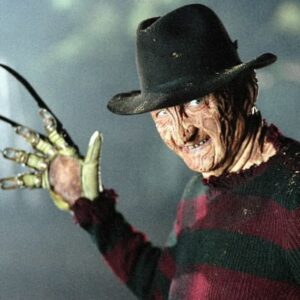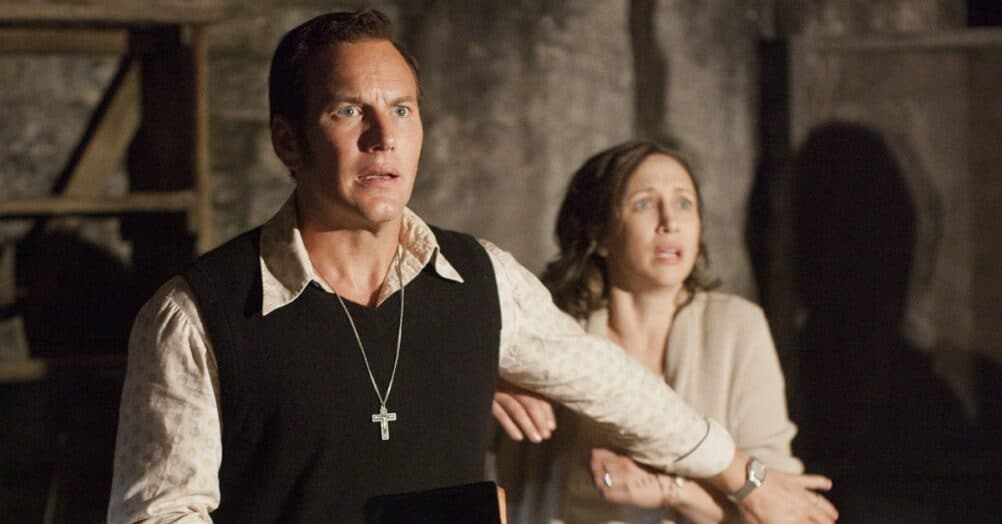
Welcome to The Best Movie You Never Saw, a column dedicated to examining films that have flown under the radar or gained traction throughout the years, earning them a place as a cult classic or underrated gem that was either before it’s time and/or has aged like a fine wine.

This week we’ll be examining Kenneth Branagh’s adaptation of MARY SHELLEY’S FRANKENSTEIN!
THE STORY:
After suffering the loss of his mother, Dr. Victor Frankenstein is on a maddening crusade to conquer death. In his obsessive quest he does the unthinkable by creating life out of an assembly of parts, making his own “monster.” Appalled by his own handiwork, Frankenstein abandons the creature and his work, but not before it returns to haunt him and all those he holds dear.
THE PLAYERS:
Based on the classic novel by Mary Shelley, the film is scripted by Frank Darabont and Steph Lady. Kenneth Branagh pulls double duty as both the director and star, portraying the obsessive Dr. Frankenstein. Robert De Niro portrays The Creature with a nice array of supporting cast members, including Helena Bonham Carter, Tom Hulce, Ian Holm, John Cleese, and Aidan Quinn.

THE HISTORY:
Author Mary Shelley is said to have come up with the idea for Frankenstein in a dream, which was spun into a novel after a competition between her husband, Percy Bysshe Shelley, Lord Byron, and writer John Polidori to see who could write the best horror story. The book was published in 1818 (under the title Frankenstein: The Modern Prometheus) and, although horrific in nature, is considered one of the earliest works of science fiction.
The legend of Frankenstein as a character has carried over through numerous incarnations in pop culture, including 113 film adaptations with even more incarnations of the character still appearing (such as the upcoming I, FRANKENSTEIN with Aaron Eckhart).
The original intent was for producer Francis Ford Coppola to direct MARY SHELLEY’S FRANKENSTEIN as a companion piece to his 1992 adaptation of BRAM STOKER’S DRACULA. However, after meeting with Kenneth Branagh, Coppola handed over the reins to him, instead serving as the producer.

Filmed at Shepperton Studios in England with the Swiss Alps serving as the backdrop for select scenes, the shoot reportedly encountered some friction between Coppola and Branagh over creative direction. After screening a rough cut, Coppola wanted large chunks of the beginning cut. Branagh refused, which reportedly caused Coppola to “disown” the film.
MARY SHELLEY’S FRANKENSTEIN opened in November 4, 1994 to mixed reviews, where it currently sits at 44 percent on Rotten Tomatoes. It pulled in $22 million domestically from a $45 million budget and was largely regarded a failure. However, as time has marched on, many have revisited the film and found a misunderstood gem and, possibly, the most accomplished adaptation of Mary Shelley’s novel to date.
“I absolutely, with respect, refute the idea that Frankenstein was terrible. It was reviewed terribly, I absolutely accept. It made money, it is a film that I’m proud of, and seven films later I was still getting gigs as a director and as an actor.”
– Kenneth Branagh (2011)

WHY IT’S GREAT:
I saw MARY SHELLEY’S FRANKENSTEIN opening weekend after being enthralled by the trailers and the companion “movie monster” link it had to Coppola’s BRAM STOKER’S DRACULA, which I loved. Watching the film in 1994 it felt dull and melodramatic with fits of coolness. As the credits rolled, though, I felt indifferent. It was a movie I never needed to see again.
Many years later I caught it on DVD and watched it with new eyes. It almost felt like I was watching a different movie, as in the case of THE 13TH WARRIOR, but what I was feeling was the use of practical effects. I can’t speak to how much or little of CGI was used in MARY SHELLEY’S FRANKENSTEIN, but if I had to guess it would be miniscule at best. The sets, the locations, the costumes, and the make-up were all top notch, believable, and engrossing. I was never taken out of the film with something distractingly sub par that was borne on a computer.
This is something you find more appreciation for as movies have begun to lean on visual effects in place of practical ones. Newer films start to lose their grit, and MARY SHELLEY’S FRANKENSTEIN has plenty to offer without CGI. The spread of disease, particularly cholera, paints a bleak view of the era, where the evolution of science was just starting to flourish and Shelley’s novel feels right at home in Branagh’s presentation, which is both bleak and colorful, with a strong, focused visual design.

“In a way there’s Victor Frankenstein’s madness in there, a passion to defeat death, partly motivated by simple anger that God seems to have this scheme that takes away people whom one loves too early. The physical movement of the camera in the film, the visceral physicality of the characters, all of it had a kind of crazed energy. It was big, old-fashioned moviemaking and I guess, maybe yeah, had the seeds of a certain kind of madness in it.” – Kenneth Branagh
Branagh, who had already directed and starred in four films prior to MARY SHELLEY’S FRANKENSTEIN was more perfectly suited to direct the adaptation than was appreciated at the time. A veteran of the theater and master at Shakespeare, Branagh fit the material, which attempts to take something so outlandish and make it believable. Branagh makes a big-budget opera out of MARY SHELLEY’S FRANKENSTEIN, complete with melodrama, tragedy, horror, and spectacle, all wrapped around a tremendous score by his go-to composer Patrick Doyle.
The score is, by all accounts, the unseen character of the film, which leads the emotions and actions portrayed onscreen as if acting alongside the players. The design of the film fits this mold as well, with a number of scenes using embellished imagery (the staircase in Frankenstein’s Geneva home is a great example of this). Yet, the visuals never get into the experimental arena that Coppola used in DRACULA. Nor do they need to.

Branagh as Frankenstein is perfectly cast, balancing the obsessive madness with a burgeoning reason that almost makes you think he’s a good guy. In fact, you have to convince yourself that he is wrong and I believe that’s always been the point of the character. His moral choices are in conflict, as are his motives, but that conflict isn’t always black and white. For his part, Branagh plays the mad doctor with a manic, passionate energy that is more relative to the human condition than averse to it.
De Niro as the monster isn’t what I’d call the greatest cinematic achievement of the character, but definitely the most horrifying and convincing in terms of a realistic portrayal. His scars, mannerisms, and plight as a creature with no name make this a fun role for De Niro to play. I think there was more room for him to expand as the creature, but in the end he delivers a performance that is both wonderfully evil and terribly heartbreaking at the same time. This is all balanced with the one innocent and pure person in the story, which is Helena Bonham Carter’s Elizabeth. The adopted sister of Frankenstein, Elizabeth is the anchor to the mad doctor’s sanity, but it’s not enough to hold him there. His obsession is overpowering and Bonham Carter can play sweet and radiant as well as she can play creepy and strange. He presence is the embodiment of sanity and rationale in a world of evil and madness.
“In rehearsals I'd ask the actors, 'Do you believe we should interfere with nature to the extent Victor Frankenstein did?' And they'd unanimously say no. But then I'd ask, 'What if someone you loved died and because of technology, you could bring her back to life? Would you do it then?' And they all said yes, it's different when it's personal. That introduces the whole gray area that the Frankenstein story presents." – Kenneth Branagh

This is all punctuated with an ending that literally rips out hearts with tragedy and pulls no punches in displaying the destruction. The culmination of Frankenstein paying for the sin of his creation is something to behold and the moment that elevates the film to new heights. It’s the moment where you can’t stop thinking about how f*cked up it is and how much you hope there’s some kind of happy ending. Alas, this is an operatic tragedy, which pays homage to the old-school classics while marching to its own beat and it works beautifully on both levels.
MARY SHELLEY’S FRANKENSTEIN is that oft-forgotten gem when best-of-horror (or sci-fi) lists are made and Halloween playlists are created. It’s a splendid harmony in the songs of the genre; haunting and lyrical, it’s the version of FRANKENSTEIN to beat.
“Instead of being a very small think that one can pick up and cuddle and cosset, the Creature is a huge, fully formed thing that, because of the recklessness of its creator, is endowed with a whole series of powers that make it, through no fault of its own, incredibly dangerous. Nevertheless, it's as similarly dependent on the creator as if it were tiny and cherishable. This underlines notions of scientific, political, and social responsibility. I think that this disadvantaged, hulking brute Victor has created holds the mirror up to nature and says,. "Here is an aborted, perverted man who in his very being is an image of what we should be avoiding."- Kenneth Branagh
BEST SCENE:
There’s a couple of really terrific sequences in the film, including the “birth of the monster” sequence and the tragic “bride of Frankenstein” scene at the end, which I won’t spoil here. However, the game-changing scene for me, which is a spoilerish one for those not familiar with the classic tale (or the film itself) and it’s a heart-wrenching trip into Temple of Doom territory only with a much more dramatic and tragic touch, which actually makes it so great.
SEE IT:
Fortunately, MARY SHELLEY’S FRANKENSTEIN is available on DVD and Blu-ray, as well as digital downloads at both Amazon and iTunes. Get it here!
PARTING SHOT:
“Although the film obeys some of the horror genre rules, it evokes a primary repulsion of something that is almost beyond the imagination and yet is sufficiently close to what's possible as to be profoundly disturbing. I will not be sad to say good-bye to this project, because it's quite a hard thing to carry around in your system for two years. After Frankenstein, I feel as if I want to make a film about somebody having a nice cup of tea.” – Kenneth Branagh (1994)




















Follow the JOBLO MOVIE NETWORK
Follow us on YOUTUBE
Follow ARROW IN THE HEAD
Follow AITH on YOUTUBE